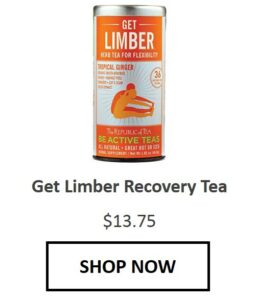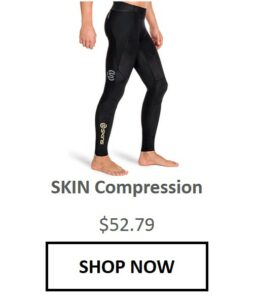
18 Feb How Long Does It Take For IT Band Syndrome To Heal
Understanding the IT Band
The IT band is a fibrous and thick band of connective tissue beginning on the outside of the hip and running down the outside of the thigh up to the shin (just below the knee). Its main function is to stabilize the knee, assist with inward rotation, and support hip abduction. When overused, the band can suffer inflammation and tightening, making it rub against the outside of the knee. This rubbing will lead to pain and swelling of the band.
IT Band Syndrome is a very common condition on runners, and it can lead to unbearable pain if no corrective measures are taken.
Your glutes and hip are key in preventing and treating ITBS as they are intricately connected. Your hips and glutes should be able to compensate excessive rotation of the knee (when they don’t, the knee will rotate excessively inward or outward making the IT band rub and swell).
Causes of ITBS:
- A tight iliotibial band (Lack of stretching)
- Tight and weak muscles in your hip, glutes, or leg
- Run on sloped surfaces
- Run on uneven surfaces
- Poor running form (flattening foot or rolling when running)
- Not wearing the right shoes (excessive wear on the outside of the heel) can also lead to ITBS
- Lack of stretching
Symptoms of ITBS:
- Pain in the outside of the knee (when running or doing other activities involving bending of the knee)
- A clicking sensation where the band rubs against the knee
- The knee is tender and painful to touch on the outside
Treatment of ITBS:
If treated well, the pain from iliotibial band syndrome can go away in a few weeks. Treatment for ITBS will be focused on reduction of swelling and pain, to then progress into recovery.
If left untreated, ITBS can be a painful and chronic condition
If rest, physical therapy, and self-care don’t relieve your symptoms after 6 months, your healthcare provider may suggest surgery.
In general terms, the treatment for ITBS will involve a 3-step process:
1. Reduction of pain and swelling
The first phase will focus on swelling and pain management. All physical activity needs to stop; rest, apply ice, and take NSAIDs as directed by your physician (occasionally a corticosteroid injection can help).
Once pain and swelling are not present (mostly noticed when the sensation of pain outside the knee is no longer present when walking), and you can feel the IT band rested and pain free at this stage, the next step will involve stretching.
2. Stretching
Your therapist will begin with deep-tissue massage, this is key before moving on to other stretching methods and strengthening. The more frequent the better. Some elite runners will do it daily, while amateurs can do 2-3 times a week.
A foam roller will also be prescribed to do at home. This tool will make you roll laterally all the way from knee to hip giving you a good stretching directly where you need it.
After deep tissue massage and stretching, you are on to the next phase:
3. Strengthening
Strengthening should always be performed progressively. Minimal impact exercises such as pool and cycling can be performed at the beginning, which will help you maintain fitness and aid in circulating blood flow to ensure a faster recovery to then progress into the core of strengthening.
A good strengthening routine should focus on glutes, hip, and leg exercises. They can include:
- Side Leg Lift
- Clam Shell
- Hip Thrust
- Side Hip Bridge
- Side Shuffle
- Single Leg Squad
- Hip Hike
Remember, your path to recovery should be focused on
-
- Pain and swelling reduction
- Stretching
- Strengthening
Prevention
Prevention is always key: keep muscles toned and make stretching a key component of your daily routine.
Getting back to action
Remember, after any injury, the best way to get back on the road is progressively. You don’t need that injury to strike back right after recovery.
First, you need to ensure that symptoms are not present. Warm up and stretch.
You can start by testing shorter runs, and shorter strides. Be smart and do not demand your body with more than needed, especially if you are feeling good.
Progress into longer runs and your natural stride as your body gives you signals. Listen to it and don’t over demand it.
Summary
In general terms, the IT band can take a few weeks to heal, only if treated properly. It all depends on the severity and what measures are taken to heal. Do not take this condition mildly, you need to stop when is time to stop as continuing physical activity with pain will only make things worse. Focus your recovery in the 3 steps above, make sure you visit your Doctor, and besides getting help from a physical therapist, you can also perform exercises at home to aid in your recovery. Be smart, train smart, recover smart.
Running Essentials




Sorry, the comment form is closed at this time.